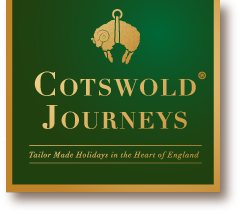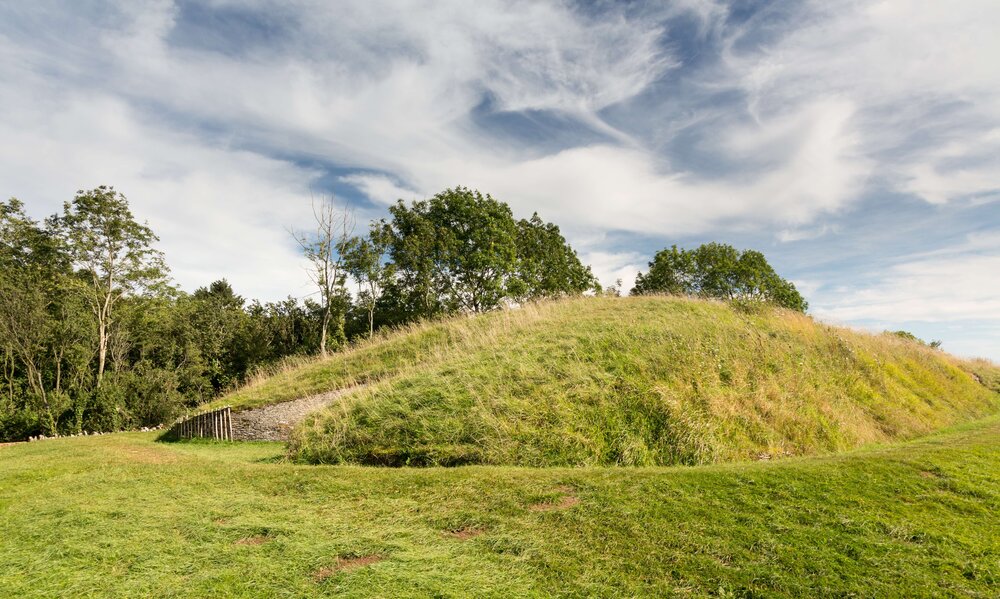“Belas” is possibly derived from the Latin word ‘bellus’, ‘beautiful’, which could describe the hill or its view. “Knap” is derived from the Old English for the top, crest, or summit of a hill. It is described in the English Heritage designation listing statement as an “outstanding example representing a group of long barrows commonly referred to as the Cotswold-Severn group, which all have a similar trapezoid shape, and are found scattered along the River Severn.” The barrow is about 178 feet (54 m) long, about 60 feet (18 m) wide and nearly 14 feet (4.3m) in height. The finest dry-stone walling is also the most visible, at what appears to be the barrow’s main northern entrance. Yet this portal, with its large limestone jambs and lintels, like the horns of a buffalo, is, in fact, not an entrance at all – it is a diversion, usually thought to have been created to deter robbers. Or it may have been constructed as a ‘spirit door’, intended to allow the dead to come and go and partake of offerings brought to the tomb by their descendants. This seems a more plausible explanation. The actual burial chambers are down the long east and west sides of the barrow and at the far southern end and may well have been covered with turf at one time. There are four burial chambers, two on opposite sides near the middle, one at the southeast corner, and another to the south end. These are formed of upright stone slabs, linked by dry-stone walling, and originally had corbelled roofs (corbelling is a construction method that offsets successive courses of overlapping stone). In the first scientific excavations of 1863-1865, the skeletal remains of five children, aged between 6 months and 8 years, the skull of a young adult male, horse and pig bones, and fragments of pottery and serrated flint blade were found among the rubble blocking the ‘false entrance’, whilst the passages leading to the chambers were roughly blocked with stones and clay.
More work was done in 1928-1931, after which the walling was secured, three of the chambers were covered and the contour of the mound was restored. Further excavations in 1963 revealed 38 human skeletons, together with animal bones, flint implements, and pottery from the end of the Neolithic period, circa 2000 BC. Romano-British pottery was also discovered inside, indicating that it had been open during the period of the Roman occupation.
There are two direct ways of reaching the mound – both on foot. The first is from the parking area that overlooks Winchcombe and Sudeley Castle on the narrow Charlton Abbots road. Or, from Cleeve Common, by following the track from deserted Wontley Farm.


0 Comments